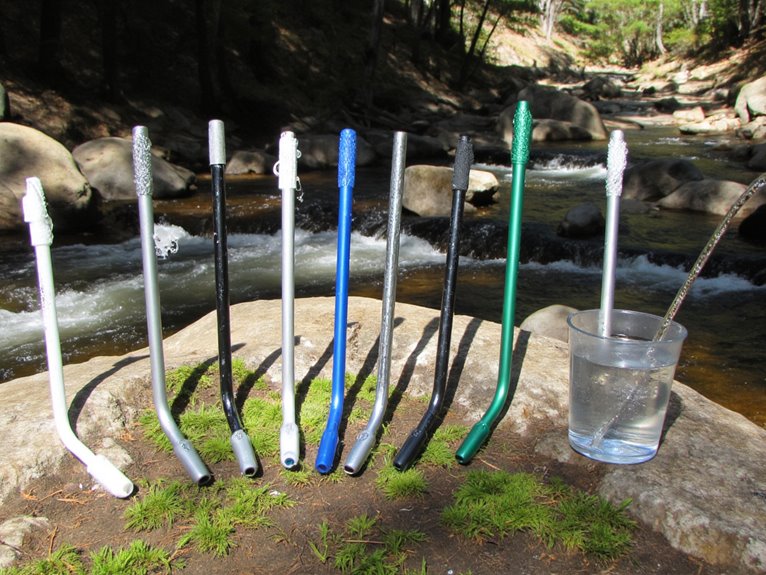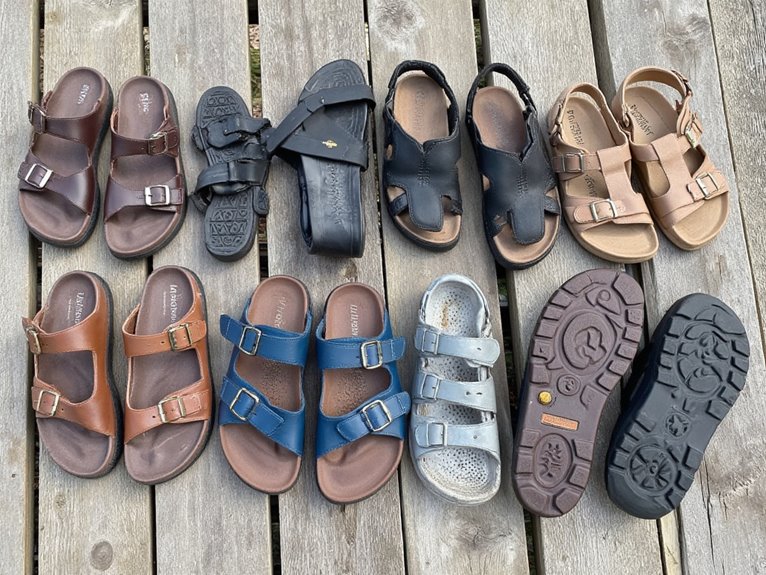Can I Bikepack on a Road Bike?
While road bikes are built for speed, their design limitations make them less ideal for bikepacking. Slender tires and aggressive riding positions can be unforgiving on rough terrain, and load carrying capacity is a concern. However, with careful consideration of frame material, tire clearance, and brake system compatibility, road bikes can be adapted for bikepacking. It's essential to understand the trade-offs and modifications necessary to transform a road bike into a capable bikepacking machine. As you venture into the world of bikepacking, you'll find that the right combination of gear, technique, and creativity can open up a new sphere of possibilities.
We are supported by our audience. When you purchase through links on our site, we may earn an affiliate commission, at no extra cost for you. Learn more. Last update on 14th November 2025 / Images from Amazon Product Advertising API.
Road Bike Design Limitations
A road bike's slender tires and aerodynamic design, optimized for speed and efficiency, inherently impose limitations on its versatility and functionality.
The narrow tires, designed for minimal rolling resistance, lack the traction and stability needed for rugged trails or rough terrain.
Additionally, the aerodynamic design prioritizes speed over comfort, resulting in a more aggressive riding position that can be unforgiving on long, rough rides.
These design trade-offs make road bikes less suitable for bikepacking, where riders often encounter varying terrain and require a more upright riding position.
Furthermore, while road bikes excel on smooth, paved roads, their design limitations make them less than ideal for the demands of bikepacking adventures.
Load Carrying Capacity Concerns
When riding a road bike involves carrying gear, it's vital to think about the load carrying capacity concerns that can impact your ride.
The type of frame material, tire clearance, and seatpost rack limitations can all affect how much weight your bike can safely handle.
Frame Material Matters
Most road bikes feature frames constructed from one of three primary materials: steel, aluminum, or carbon fiber, each with its unique characteristics that substantially impact load carrying capacity.
Steel frames are known for their durability and flexibility, making them suitable for heavy loads, but they can be heavy and less responsive.
Aluminum frames offer a good balance between strength, weight, and affordability, but may not be as comfortable under heavy loads.
Carbon fiber frames are lightweight and responsive but often have limited load capacity due to their fragile nature.
When considering bikepacking on a road bike, it's essential to understand the limitations of your frame material to guarantee a safe and enjoyable ride.
Understanding the strengths and weaknesses of your frame material will help you plan your route and pack wisely, allowing you to confirm a successful trip.
Tire Clearance Constraints
Beyond the frame material, another critical factor to consider when bikepacking on a road bike is the tire clearance, which can substantially impact the load-carrying capacity of your bike.
Road bikes typically have narrower tires and less clearance between the frame and wheels, limiting the size of bags and accessories that can be attached.
This constraint can greatly reduce the amount of gear you can carry, making it essential to choose gear strategically and prioritize the essentials.
Consider the width of your tires and the available clearance when selecting bikepacking bags and accessories to guarantee a comfortable and stable ride.
Seatpost Rack Limits
A road bike's seatpost rack limits can substantially impact its load-carrying capacity, as the attachment points and structural integrity of the rack can only handle a certain amount of weight and stress before compromising the bike's stability and safety.
When bikepacking, every gram counts, and exceeding the recommended weight capacity can lead to a world of trouble.
It's essential to check the manufacturer's guidelines for the maximum weight limit of your seatpost rack and pack accordingly.
Overloading can cause the rack to break, the seatpost to bend, or even worse, the bike to become unstable.
Be mindful of your gear's weight and distribute it wisely to guarantee a safe and enjoyable bikepacking adventure.
Tire Clearance and Width
Road bike frames are designed to accommodate tires within a specific width range, and understanding the nuances of tire clearance is essential for a comfortable and efficient ride.
Typically, road bikes are optimized for 23-28mm tires, with minimal clearance for wider tires.
When bikepacking, you may want to run wider tires for added comfort and traction. However, it's vital to verify that your frame can accommodate these wider tires.
Check your frame's specifications to determine the maximum tire width it can handle. Exceeding this limit can lead to tire rub, reduced clearance, and potentially even frame damage.
Be mindful of these limitations to guarantee a safe and enjoyable bikepacking experience, making certain that you're aware of the maximum tire width your frame can safely accommodate.
Brake System Compatibility
In terms of brake system compatibility, road bikers need to take into account the intricate relationship between their bike's brakes and wheels.
Different brake types, such as disc brakes and rim brakes, have distinct requirements and limitations that impact overall performance and safety.
Understanding these constraints, as well as exploring hybrid brake options, is vital for a smooth and enjoyable ride.
Disc Brake Constraints
Disc brake systems, a relatively recent innovation in road biking, have brought about a new set of constraints that riders must address when selecting components or upgrading their existing brake systems. While disc brakes offer improved stopping power, they also introduce compatibility issues that can limit bikepacking possibilities.
When it comes to bikepacking on a road bike, riders need to verify the following disc brake constraints:
Rotor size compatibility: Verify that your wheels and brake calipers are compatible with the rotor size.
Caliper mounting: Confirm that your brake calipers can be mounted to your road bike's frame and fork.
Hydraulic line routing: Plan for hydraulic line routing to guarantee that they don't interfere with bikepacking gear or frame design.
Pad wear and replacement: Bear in mind the availability of brake pads and the process of replacing them, especially when bikepacking in remote areas.
Rim Brake Limitations
As riders navigate the complexities of brake systems, it becomes apparent that rim brakes, despite their traditional appeal, also come with limitations that can impact bikepacking adventures.
One major constraint is the risk of overheating, which can lead to brake failure, particularly when descending steep, technical trails.
Additionally, rim brakes can be more prone to mud and debris accumulation, reducing their effectiveness in wet and dirty conditions.
In addition, the constant rubbing of the brake pads against the rim can lead to premature wear, requiring more frequent pad replacements.
These limitations can be especially problematic for bikepackers, who often venture into remote areas with limited access to maintenance and repair services.
Hybrid Brake Options
Riders seeking to overcome the limitations of traditional rim brakes often turn to hybrid brake options, which combine the benefits of different brake systems to achieve superior performance and versatility in a wide range of bikepacking scenarios.
These innovative solutions offer improved stopping power, reliability, and control, making them an attractive choice for bikepackers.
TRP's HY/RD hybrid brake system, which pairs a hydraulic caliper with a mechanical lever, offers exceptional modulation and power.
The Paul Components Klamper brake, a hybrid of mechanical and hydraulic systems, provides precise control and reliability.
Shimano's R785 hydraulic road brake, designed for drop-bar bikes, offers improved heat dissipation and consistent performance.
The Hope Tech V4 hybrid brake system, combining mechanical and hydraulic elements, provides exceptional power and modulation.
Frame Material and Durability
A road bike's frame, the backbone of the machine, is only as good as the material it's made of, and with regard to durability, the right choice can make all the difference between a reliable ride and a costly repair.
Key to a successful bikepacking trip is a durable frame that can withstand the added weight and rugged terrain.
Carbon fiber, titanium, and steel frames are popular options, each with their strengths and weaknesses.
Carbon fiber frames are lightweight and responsive, but may be prone to damage from heavy loads.
Titanium frames offer a balance of strength and longevity, while steel frames provide added comfort and flexibility.
In selecting a frame material, consider the demands of bikepacking and prioritize durability to guarantee a smooth, enjoyable ride.
Gearing and Cadence Considerations
With a durable frame in place, the focus shifts to the gearing system, where a harmonious balance between gear ratio and cadence is critical to maintaining momentum and efficiency on varied terrain.
When bikepacking on a road bike, it's essential to find the sweet spot between gear ratio and cadence to tackle diverse landscapes.
A wide-range cassette (11-32 or 11-36) provides a broader gear range for tackling steep inclines and rough terrain.
A compact or triple chainring setup allows for easier pedaling on flat sections and more efficient climbing.
A cassette with closer spaced gears (e.g., 11-25 or 11-28) is ideal for riders who prioritize speed and efficiency on smoother surfaces.
Experimenting with different gear ratios and cadence techniques can help you find your ideal balance for bikepacking adventures, and then explore different combinations to plunge into the specifics of your riding style, ultimately finding the perfect harmony for your bikepacking escapades.
Suspension and Comfort Factors
Beyond the gearing system, a well-designed suspension and ergonomic features are essential in mitigating the physical demands of bikepacking on a road bike.
A road bike's rigid frame and narrow tires can be unforgiving, especially on rough terrain, making suspension a critical factor in reducing fatigue and discomfort.
Look for bikes with built-in suspension systems, such as carbon fiber frames or fork suspension, which can help absorb shock and vibrations.
Additionally, ergonomic features like handlebar tape, saddle design, and grip shape can substantially impact comfort levels during long hours in the saddle.
Accessories and Modification Needs
Road bikes, by design, require thoughtful accessorizing and strategic modifications to transform them into capable bikepacking machines, and this often involves careful consideration of luggage systems, storage solutions, and other aftermarket components.
To guarantee a comfortable and efficient ride, it's essential to choose accessories that complement your road bike's design.
Frame-mounted bags and handlebar packs for carrying gear
Water bottle cages and hydration systems for staying hydrated
Accessory mounts for adding lights, GPS devices, or other essentials
Custom seatposts and handlebars for improved ergonomics and comfort



